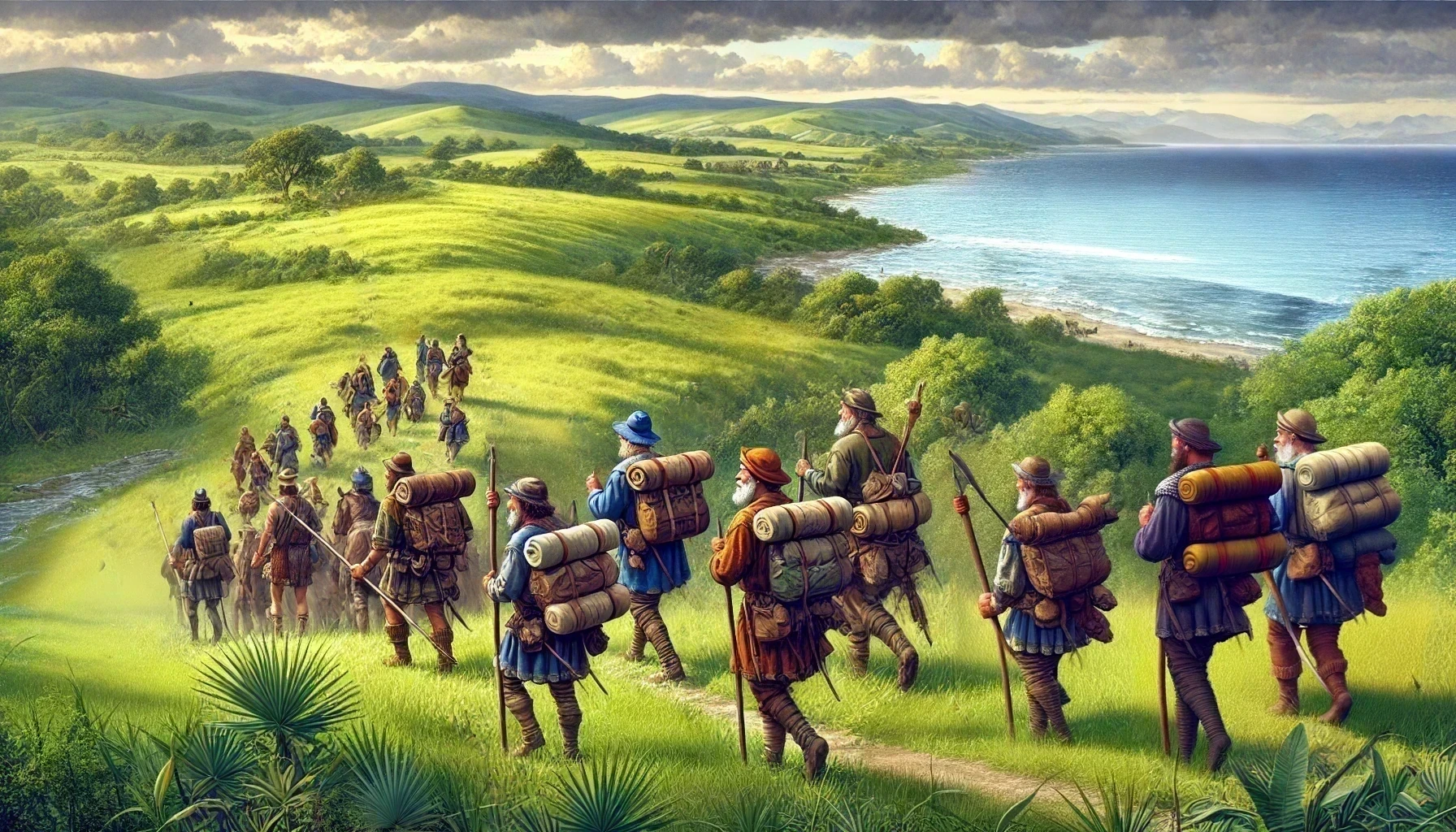
First Scouting Parties
Discovery, Exploration
A few weeks following their arrival, the settlers of Dawnshore embarked on their first expeditions into the unexplored lands of the continent. Numerous scouting parties were formed, some setting out on foot, others sailing along the coastline. Their mission: to map the land, identify resources, and locate potential dangers.
In the early days of the Dawnshore settlement, the first expeditions into the continent's vast wilderness were undertaken with a sense of both anticipation and trepidation. The unknown landscape held promise for the settlers, but also concealed potential threats and challenges. The scouting parties, comprised of experienced hunters, farmers, and miners, set out in multiple directions. Some traveled on foot, while others sailed along the coast in search of resources and habitable land. They carried basic tools and weapons, and were tasked with hunting and fishing for sustenance during their journey. Unless encountering difficult terrain or other dangers, all parties where to travel for onward for 2 weeks, then turn back to report. Only a short distance to the north a river blocked further traveling by foot and the northbound scouts had to travel west for 3 full days before finding a suitable place to cross a major tributary. Soon after, the main river forced them all they way into the foothills of the mountains before another crossing was possible. Exploring the mountains to the west they discovered both coal and copper deposits. Some distance to the southwest of Dawnshore, a pass through the mountain chain was found. Pressing on a few days passed the 2 week limit, the westbound party made it to the other side of the mountains to find a large forested valley and more importantly, signs of iron deposits. The land based, southbound scouts described vast, open grasslands ideal for grazing livestock, and patches of forests rich in game. At last, they also was forced westwards to find a crossing of a river that blocked their path. Traveling just of the coast, the scouts traveling by sea reached much further south before turning back. They could report a warmer climate and a more diverse wildlife. Lots of grassing herds, but also larger and more numerous carnivores. Sailing northwards, the last scouting party could report a more familiar terrain with herds of wild horses, aurochs, boars and mouflons. In both direction they passed many larger rivers, and uncountable streams, making access to fresh water easy in any direction. The information gathered from these initial expeditions helped to shape the settlers' understanding of their new home. It illuminated the continent's potential, but also underscored the dangers and challenges they would face. As they mapped the land, assessed resources, and cataloged potential threats, the settlers of Dawnshore took the first steps towards taming the wild continent. Previous event
